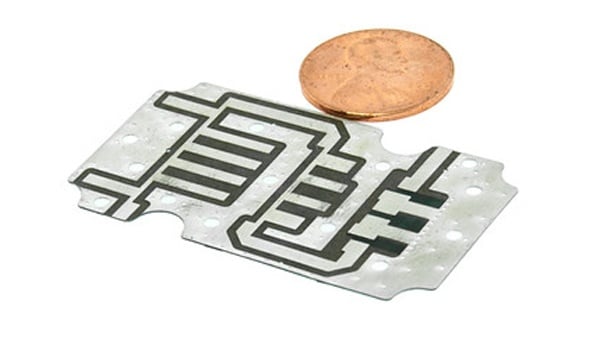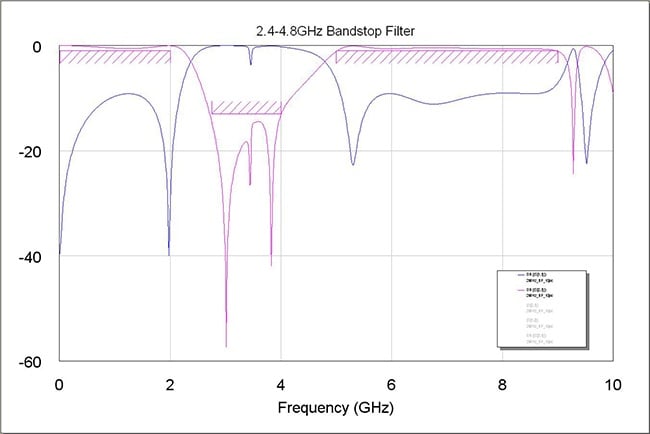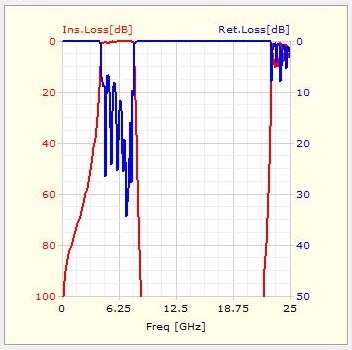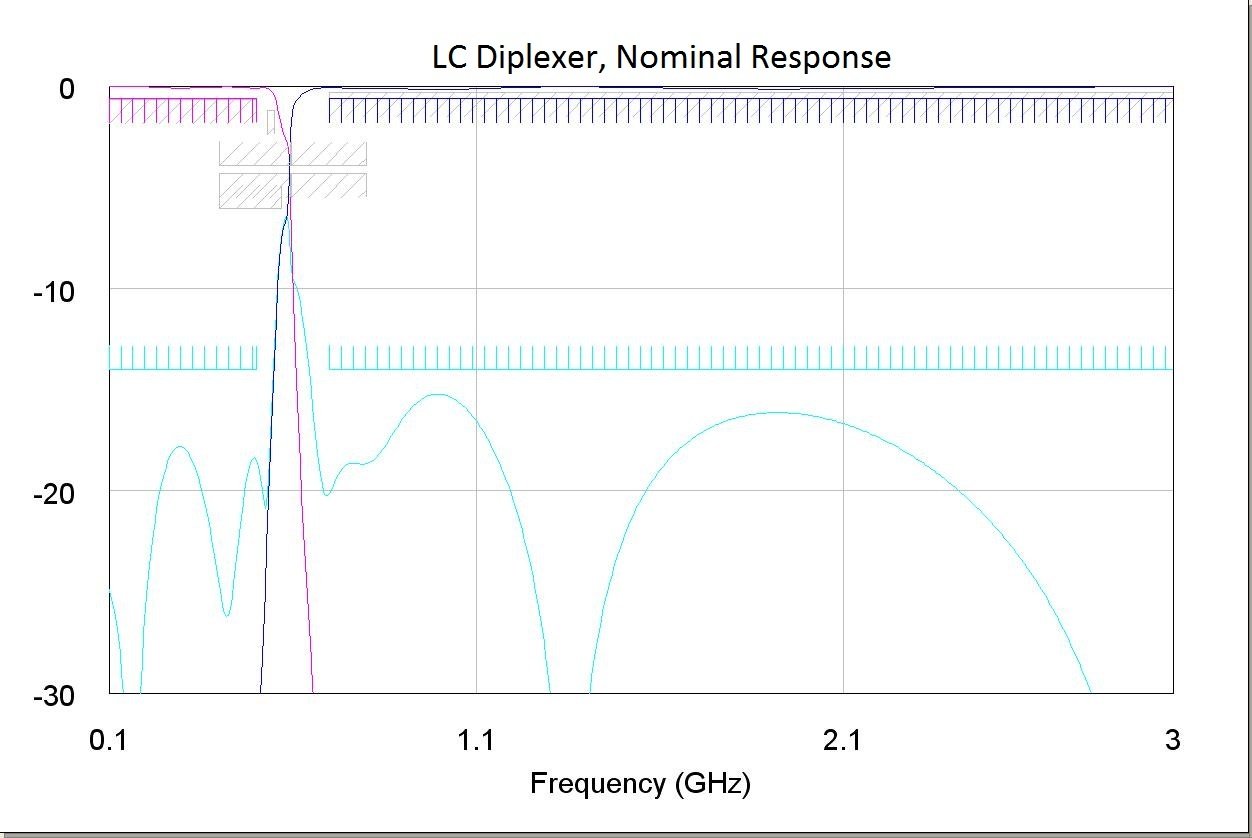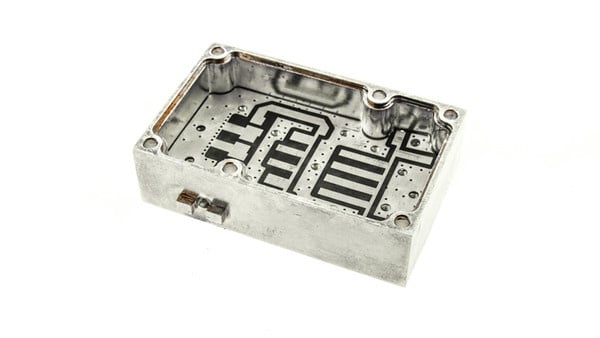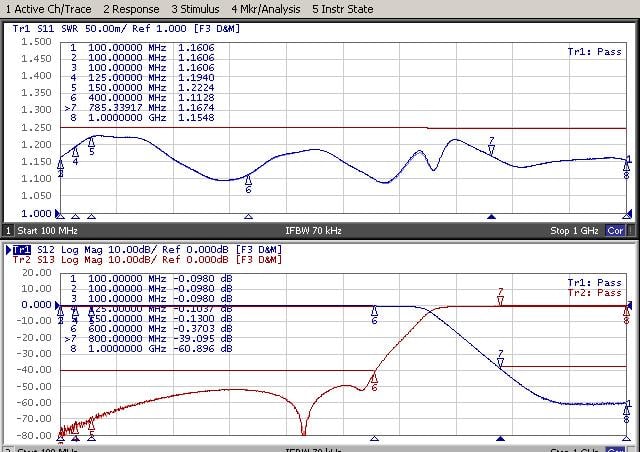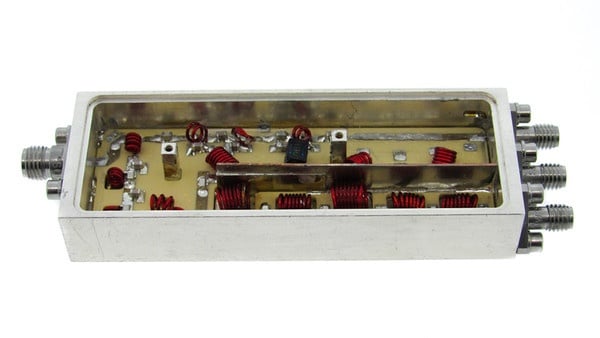A printed circuit board (PCB) is an inexpensive and compact way to create many of the necessary interconnects between RF components in a subsystem. The interconnects are most often created with stripline and microstrip transmission lines, as well as vertical coaxial transmission lines created with plated through hole patterns.
A pure notch or band stop filter (also called band reject filter) works by creating a Voltage Standing Wave Ratio (VSWR) resonance over a narrow bandwidth. This creates near total reflection over that bandwidth, while having very little reflection in the surrounding pass bands. By the nature of their creation, these notch filters are typically narrow band. Bandwidth comes linearly with added resonators, increasing size and loss.
For many narrow to wide bandwidth band pass applications, pure band pass filters (also bandpass filters or BPF) are a good fit, - forming rejection bands below and above the passband in a single filter. Coupled line, combline, and interdigital are three pure band pass filter types. Pure ilters can be the most efficient solutions for loss and physical footprint where the specs mandate their usage. For ultra-wideband applications, pure solutions may require too many poles making physical size too large and insertion loss too high for many systems.
Based on the application, electrical, mechanical requirements, and knowing what type of filter topology to use can help exceed the performance of the product. Both of these designs use specific topologies based on frequency and power handling requirements.
The typical use of a diplexer (three-port device) enables source transmitters operating on two separate frequencies to use the same antenna. In other applications, the diplexer allows a single antenna to transmit and receive on discrete frequencies. Additionally, a diplexer will provide the ability for an antenna to transmit and receive simultaneously.
When designing and manufacturing passive broadband high frequency cascaded LC filters (inductor and capacitor), a lot of undesirable component interactions can occur if not properly managed. The goal is to minimize the difference between an RF microwave filter design constructed with ideal components and one using commercial off-the-shelf (COTS) and custom manufactured components.


